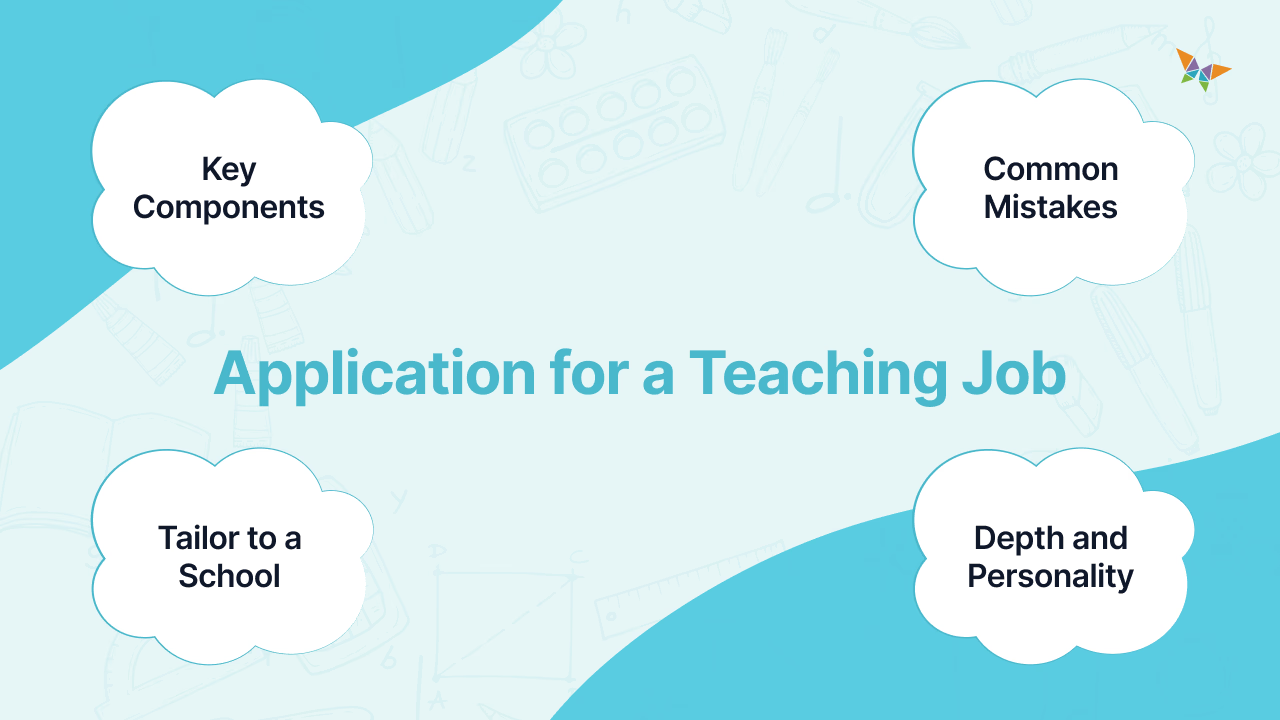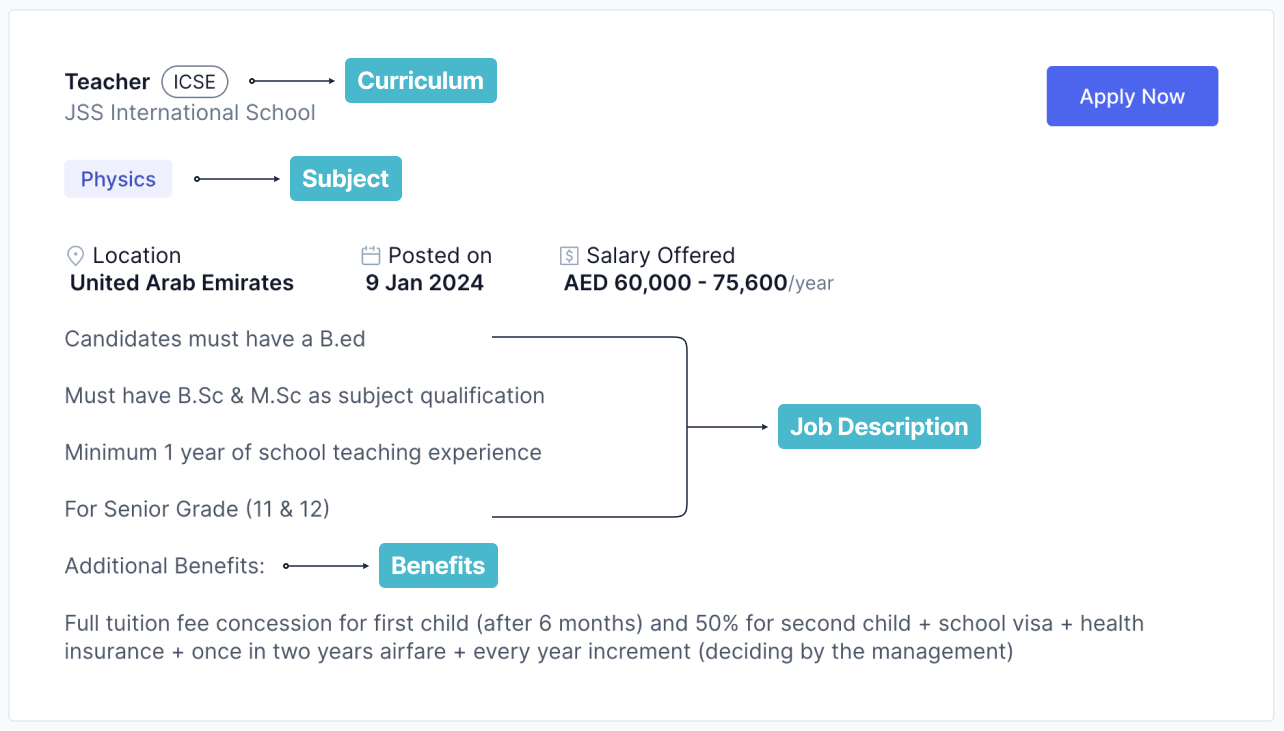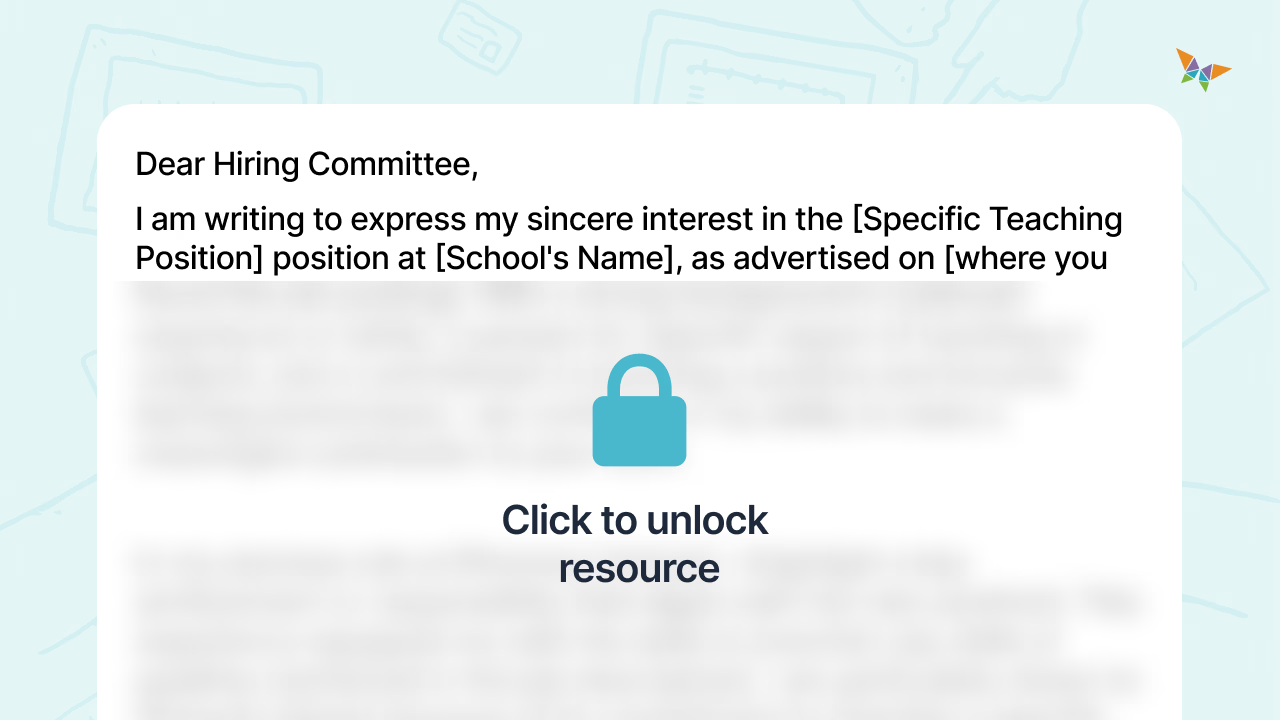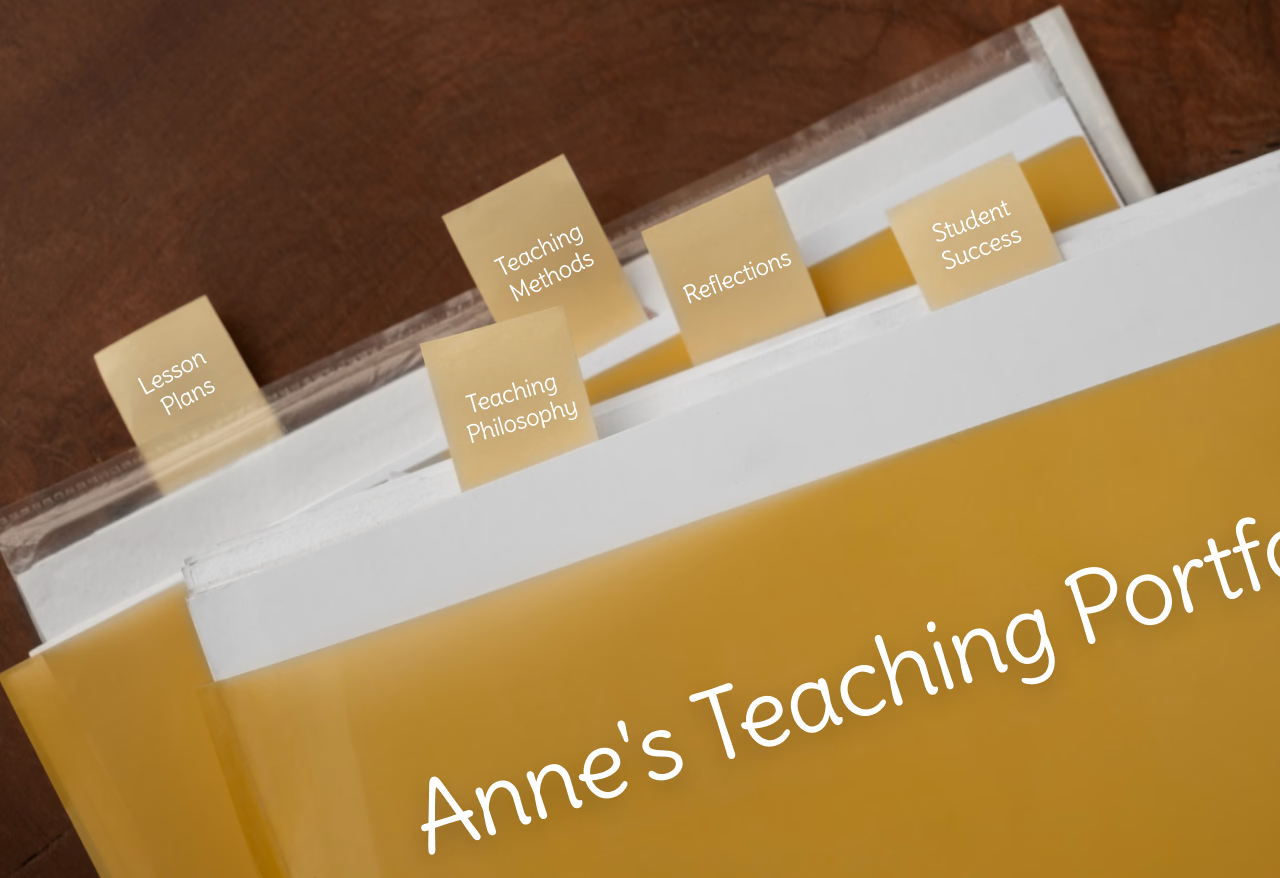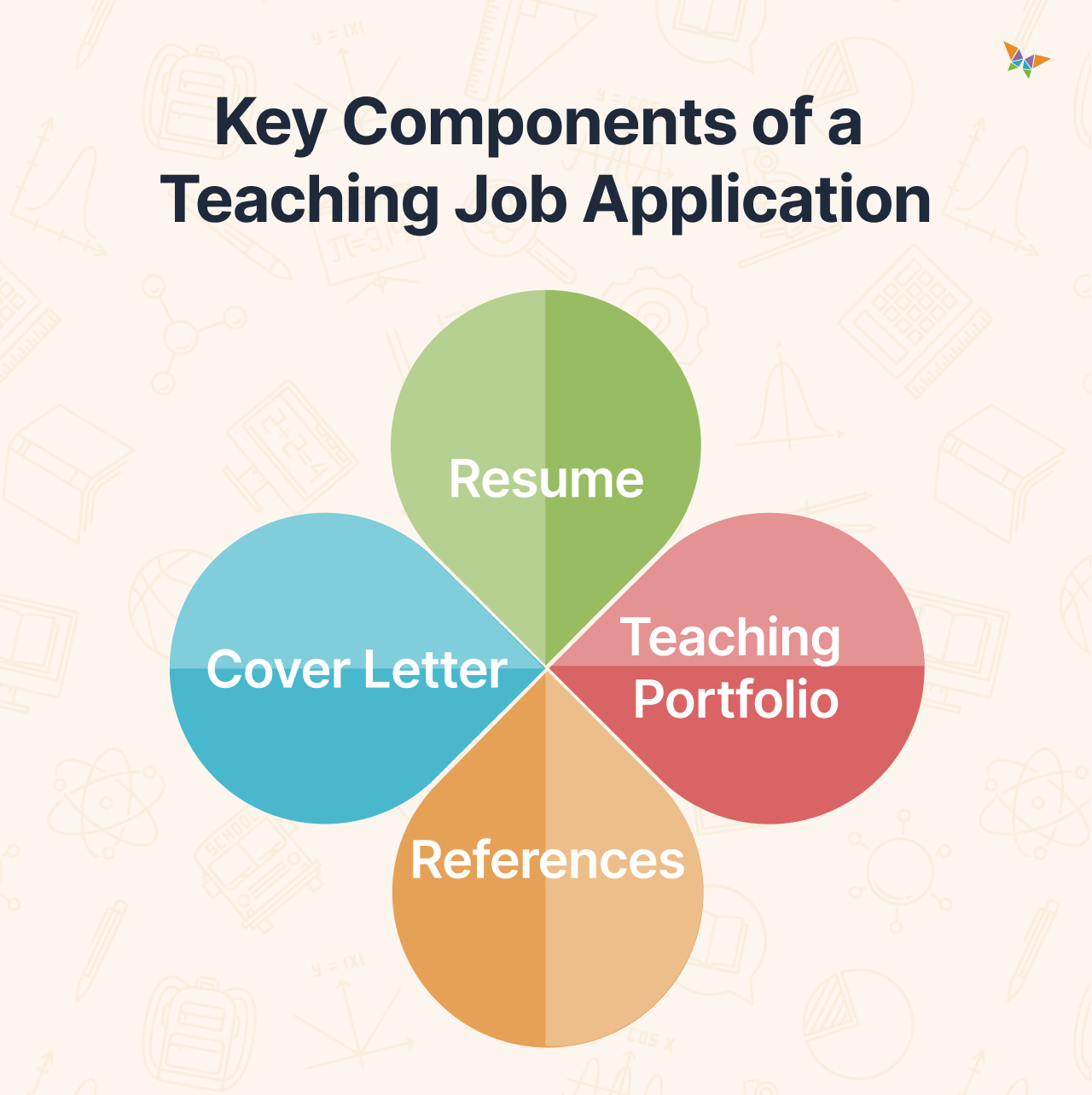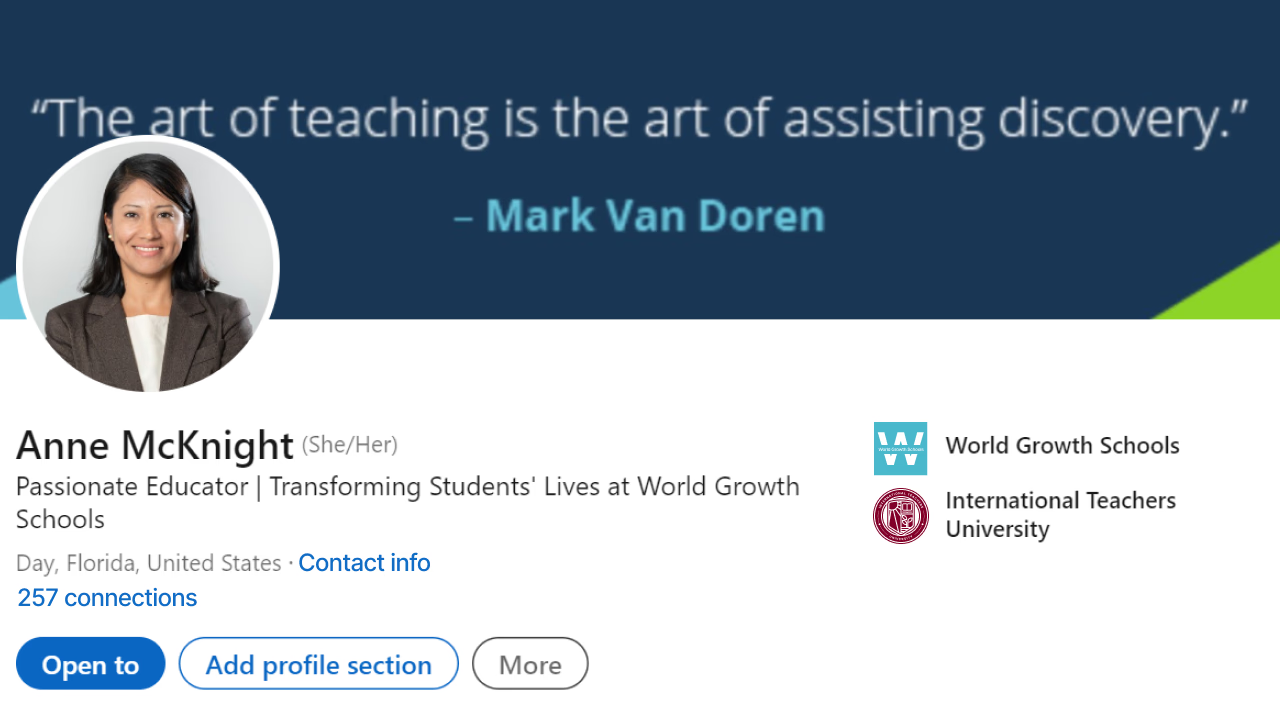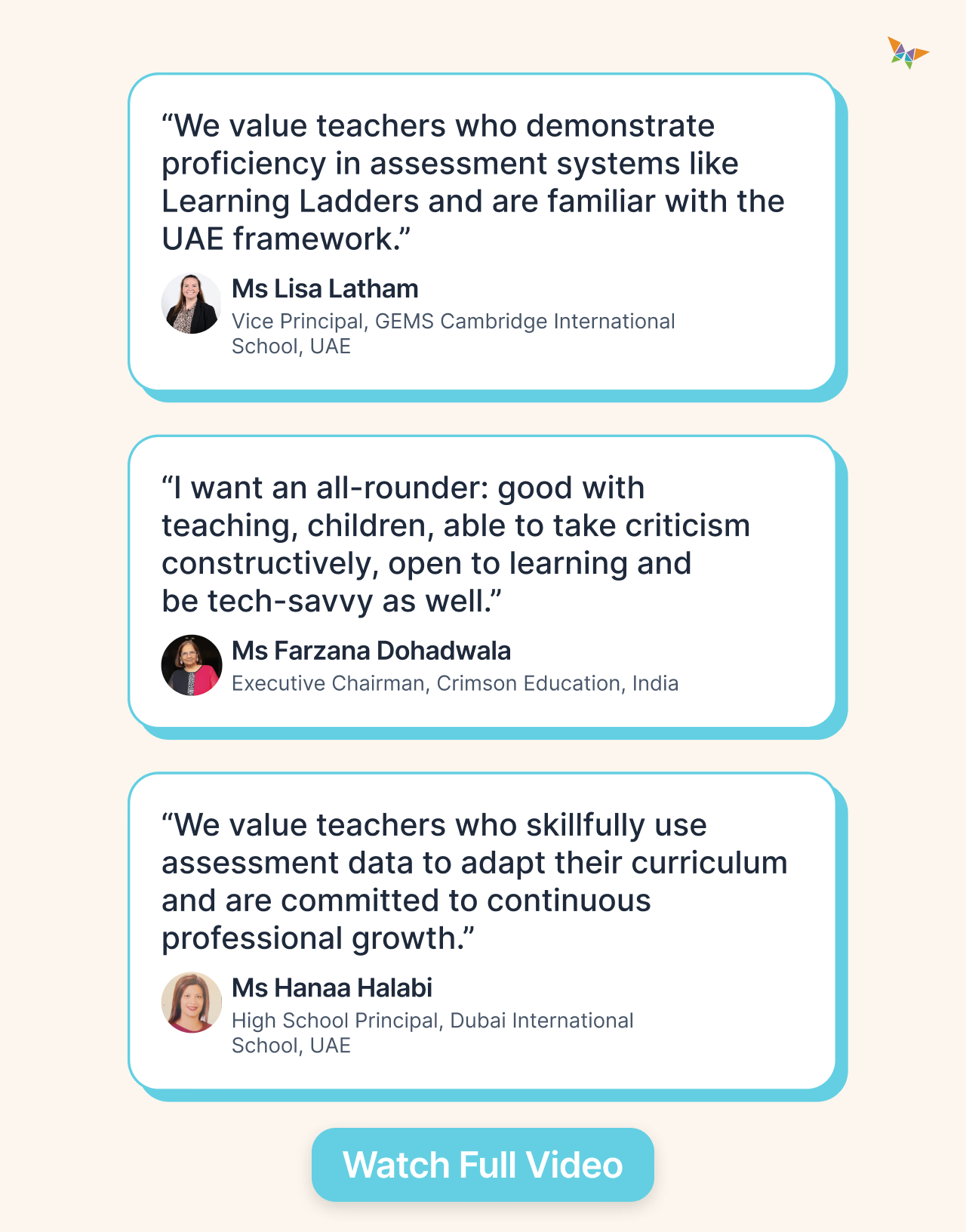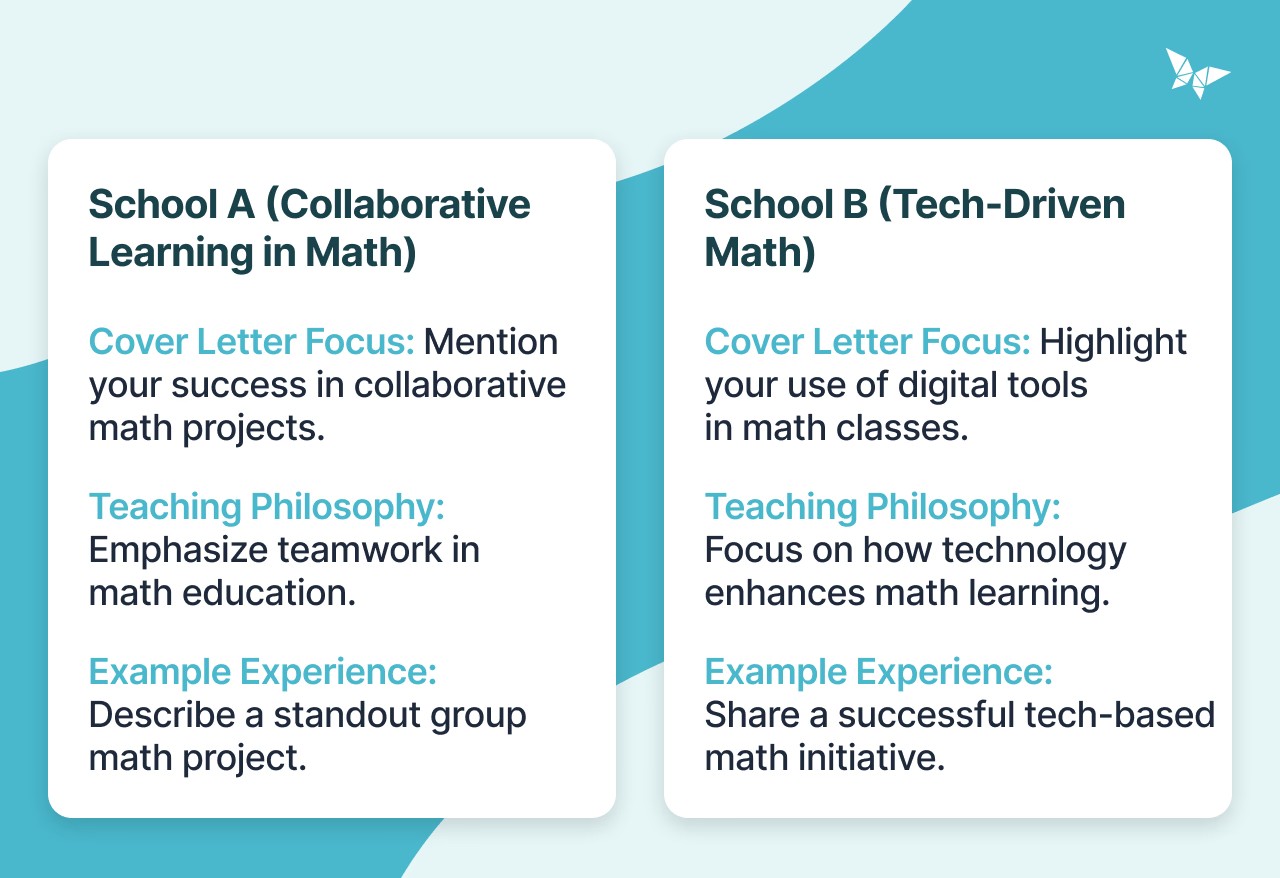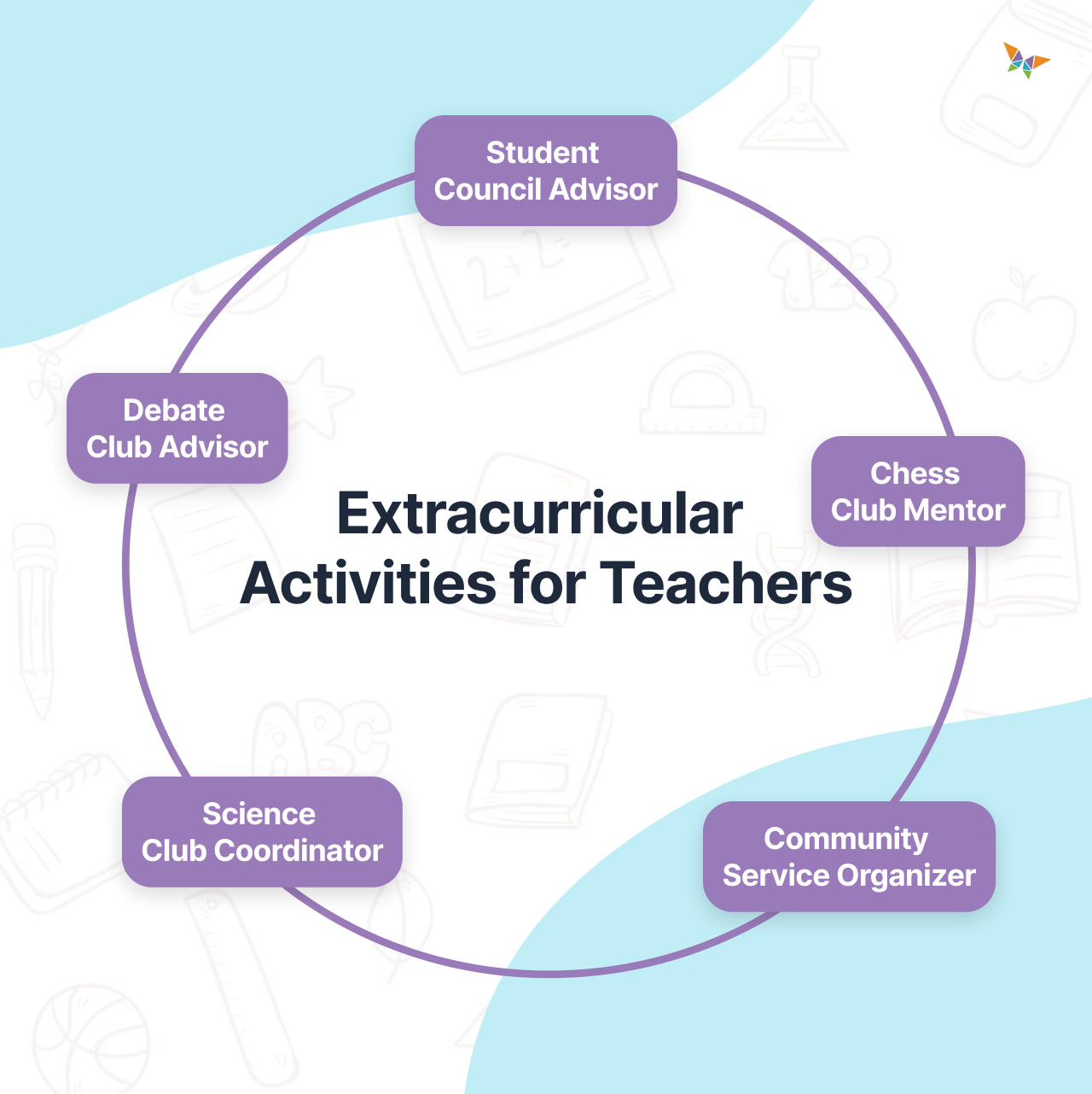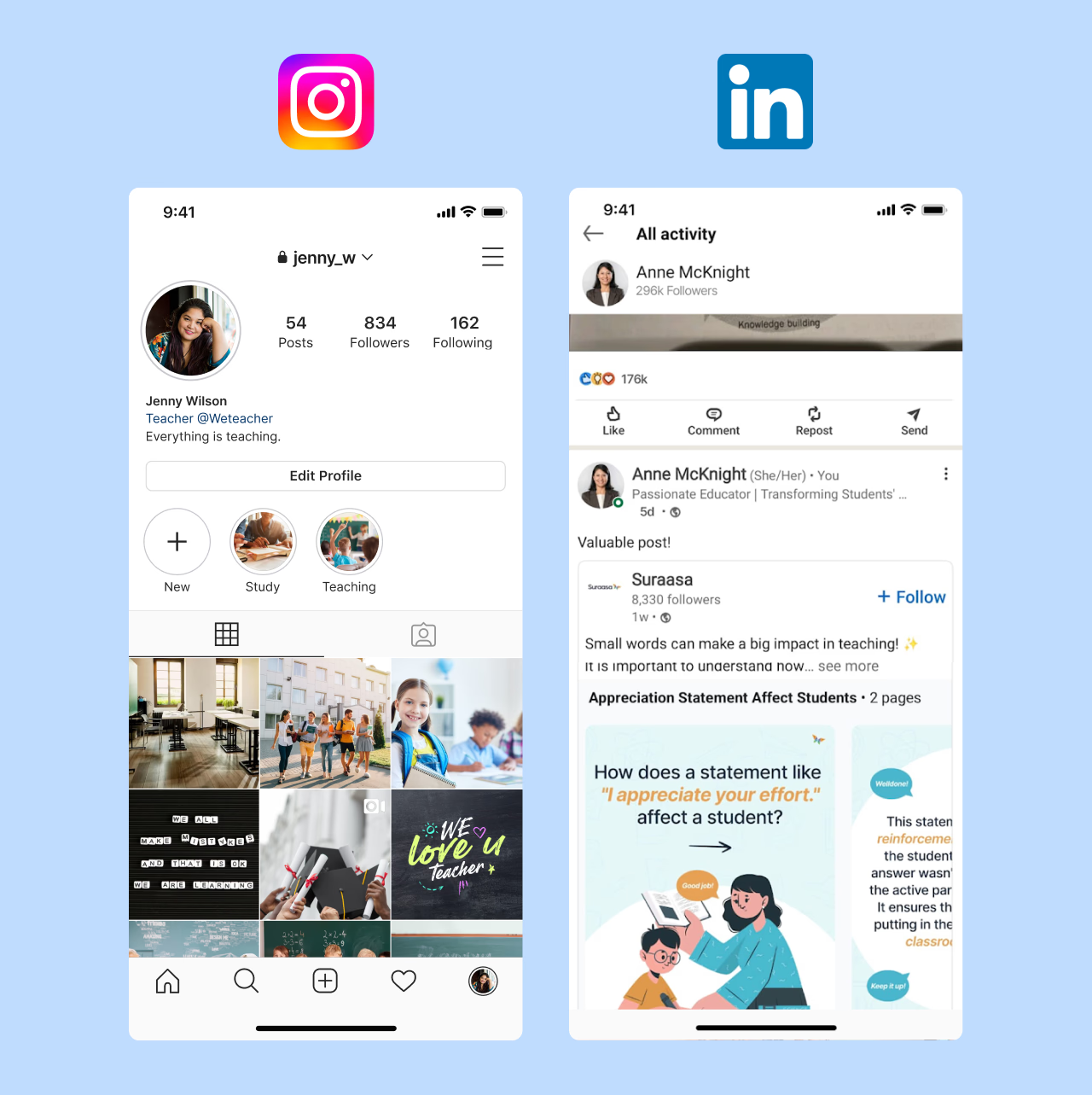Trying day after day to land your dream teaching job but facing constant rejection in today’s competitive job market?
We get you.
It can be challenging, but there’s a way to turn things around: having the perfect application for teacher job.
But how do you create an application for teacher job that screams, "I'm the perfect fit for your institution?"
Think of it like a puzzle. Your application pieces need to fit perfectly into the school's needs and culture, showcasing how you are the missing piece they’ve been searching for.
Crafting such an application requires more than just listing your qualifications. It’s about presenting your skills, experience, and passion in a way that resonates with hiring committees. This involves a strategic approach, careful planning, and attention to detail.
In this blog, we'll guide you through every step of the process:
- Application Format for Teacher Job
- Sample Applications for a Teacher Job (Download 10 free samples to fast-track your journey to your dream job.)
- Step-by-Step Process of Writing an Application for a Teacher Job
- How to Add Depth & Personality to Your Application for Teacher Job?
- Expert Tips for Standing Out in the Application Process
Let's dive in and get started on your path to securing your ideal teaching position!
To begin with, let us explore the application format for a school teacher job. It's crucial to tailor your application for teacher job to the specific position you are applying for.
Use the job posting as a guide to determine which qualifications and skills to highlight in your application. Below is a detailed format for crafting a compelling job application for teaching job.
1. Date and Whom to Address
Start with the date at the top of your email or letter. Address the hiring manager by name if possible. If you don't have a specific name, use a formal greeting.
2. Email Subject Line
Use a clear and professional subject line.
3. Introduction
Briefly introduce yourself and state the position you are applying for. Mention where you found the job listing. Provide a concise overview of your qualifications.
4. Body
Highlight your key qualifications and achievements. Discuss why you are a perfect fit for the role and the institution. Mention any special skills or experiences that align with the job requirements.
5. Closing
Thank the hiring manager for considering your application. Include a call to action, such as inviting them to review your attached documents or to contact you for further discussion.
6. Signature
End with a formal closing such as "Sincerely" or "Best regards”. Include your full name and contact information.
7. Attachments
Ensure your resume, cover letter, and any other required documents are in PDF format to maintain formatting.
Label your files clearly, e.g.,
By following this application format, you ensure your application is professional and well-organized, making a strong first impression.
To truly grasp how to craft a compelling application for teacher job, nothing beats seeing real examples. The sample applications below will give you a clear roadmap, demonstrating how to structure your application and what information to include.
Let's look at 15 sample application for teacher jobs that cover various grades and unique subjects. Copy-paste these examples and customize them to fit your unique qualifications and the specific job you’re applying for -
- Kindergarten Teacher Application for Teacher Job
- Primary Grade Math Teacher Application for Teacher Job
- Primary Grade English Teacher Application for Teacher Job
- Middle School Science Teacher Application for Teacher Job
- Middle School History Teacher Application for Teacher Job
- High School Physical Education Teacher Application for Teacher Job
- Part-Time English Teacher Application for Teacher Job
- Assistant Teacher Application for Teacher Job
- Fresher Teacher Application for Teacher Job
- School Counselor Application for Teacher Job
- Primary School Teacher Application for Teacher Job
- Middle School Art Teacher Application for Teacher Job
- High School Science Teacher Application for Teacher Job
- Special Education Teacher Application for Teacher Job
- ESL Teacher Application for Teacher Job
Fill in your details, and we'll send these samples directly to your email or WhatsApp.
We hope these samples of application for teacher jobs help you get your dream job. Now that you've seen these examples, let's learn the steps to write a great application. Knowing the steps will help you make each application perfect.
Let's start by exploring the step-by-step process for writing an application for teacher job. This section will guide you through each crucial stage, ensuring your application shines in a competitive field.
Step 1: Understanding the Job Requirements
Have you ever wondered what differentiates a standard teaching application from an extraordinary one? It all begins with a deep understanding of the job requirements.
Every teaching job has distinct requirements. Excelling in your application means aligning your skills and experiences with what schools are actively seeking. This alignment shows that you're not just qualified but the right fit for their culture and goals.
Analyzing the Job Description
To understand the job requirements, you need to analyze the job description document (aka JD) carefully. This document details the duties, responsibilities, qualifications, and expectations for the job. Generally found on the school’s website or job boards, a JD is crucial for tailoring your application.
What you can learn from a job description:
- The subject and level you will be teaching.
- The curriculum, standards, and assessment methods you will be following.
- The school culture, mission, and vision you will be supporting.
- The skills, knowledge, and competencies you will need to demonstrate.
- The education, certification, and experience you will need to have.
- The benefits, salary, and incentives you will receive.
Tips for Job Description Analysis
Carefully Read the Job Description: Take your time going through the job details. Pay attention to the words recruiters have used and note the important things they're looking for. Ensure you understand these and keep them in mind for your application.
Learn about the School’s Culture: Check out the school's website and the job posting for clues about what they value. Understanding their culture can help you tailor your application to fit in better.
Highlight Important Qualifications: Identify the must-have skills and qualifications. These are the things your application should focus on.
Seek Clarifications if Unclear: Reach out to the school’s HR for clarifications on any unclear aspects of the job description. This shows your attention to detail and proactive nature.
Identify Gaps in Your Profile: Recognize areas where your qualifications or experiences don't match up with the job requirements and think of ways to address them. For example- taking additional courses or gaining more experience.
With these insights, you're now equipped to analyze job descriptions like a pro in your journey of applying for teaching jobs. Let's move on to the next step in your teacher application journey!
Step 2: Drafting the Key Components of an Application for Teacher Job
Crafting a compelling teaching job application involves assembling key components:
- Cover letter
- Resume
- Teaching portfolio
- References.
Let's delve into each element in detail.
Cover Letter: Your Personalized Introduction
A cover letter serves as your first impression. It’s a one-page document expressing your eagerness for the job and why you're a perfect fit. Your cover letter should:
- Address the employer, position, and requirements directly.
- Convey your interest in the job and the school.
- Highlight key skills, experiences, and achievements aligned with the job criteria.
- Showcase your personality, passion, and professionalism.
- Finish by encouraging the employer to get in touch with you and saying thank you.
Resume: Your Professional Journey
Your resume must be a one to two-page long document that lists your education, certificates, experience, skills, and achievements. Make it concise, using clear and professional language. Your resume should:
- Utilize a professional layout with clear headings and simple fonts.
- Highlight your qualifications and competencies.
- Use action verbs, adjectives, and adverbs to describe your skills and achievements vividly.
- Incorporate relevant keywords and quantifiable metrics to demonstrate impact.
Quantifiable achievements or numbers are your friends– adding substance and grabbing attention in a sea of applications.
For example,
Numbers provide concrete evidence of your impact and distinguish your application from others.
Teaching Portfolio: A Showcase of Your Skills
Bring your teaching experiences to life with a portfolio. Include lesson plans, student work samples, and any special projects. It provides a tangible demonstration of your capabilities.
Your teaching portfolio should:
- Include a variety of materials showcasing your teaching philosophy, methods, and outcomes. These can be lesson plans, student work samples, assessments, feedback, and reflections.
- Organize your materials into categories, such as teaching philosophy, methods, outcomes, and professional development.
- Provide a brief introduction and explanation for each item, including context, purpose, process, and results.
- Reflect on your strengths and areas for improvement, outlining plans for professional growth.
References: Your Cheerleaders
Gather references from individuals who can vouch for your character, performance, and suitability. They should be relevant, credible, and willing to provide specific examples and evidence supporting their statements. Your references should:
- Know you well and speak positively and honestly about your skills and achievements.
- Include relevant and credible individuals, such as previous employers, supervisors, colleagues, mentors, or students.
- Be willing, available, and have given their permission to provide a reference for you.
By crafting each component meticulously, your teaching job application becomes a comprehensive representation of your capabilities and passion.
Now, let’s move on to the next step of navigating the application process – online and offline.
Step 3: Navigating the Teaching Job Application Process – Online and Offline
Applying for a teaching position means dealing with both online and offline application processes. In our digital age, where the keyboard is mightier than the sword (or chalk, in your case), online submissions have become the norm. However, traditional offline methods still persist in certain scenarios.
Let's dive into both worlds and make sure your application stands out, whether you're typing away or handing in a physical copy.
Online Application
Let's explore key aspects to focus on when submitting an online application for a teaching job.
A. Creating a standout digital resume and portfolio
Getting your resume and portfolio ready for online job applications is important. Here are easy ways to do it:
- Use the Right File Types: Convert your resume and portfolio to PDFs. This keeps them looking neat and professional, no matter where they’re opened. A simple tool like Adobe Acrobat or a website like iLovePDF can help you do this. However, some schools specifically may ask for your resume in a Word file format. In that case, you will need to share a Word file only.
- Put Your Portfolio Online: Use websites like Behance or Wix for your teaching portfolio. You can show off your work neatly, like photos of your classroom activities or lesson plans.
- Talk About Your Tech Skills: In your resume, mention if you're good with technology, like using smart boards or educational software. This is really useful for schools today. You can also include videos or pictures of you using technology in classroom in your portfolio.
- Keep Everything in One Place: Use Google Drive or Dropbox to store your resume and portfolio. This way, you can quickly share them with just a link, making it super easy for schools to see your work.
By following these steps, your resume and portfolio will be set up perfectly for online job applications. This shows schools that you’re organized and ready for today’s digital world.
B. Understanding and utilizing applicant tracking systems (ATS)
Lastly, understanding how Applicant Tracking Systems (ATS) function is key.
By understanding and leveraging ATS, you increase the chances of your application progressing further in the hiring process.
Here's how to ensure your application stands out in this automated world:
- Tailor Your Resume: ATS scans for specific keywords. Tailor your resume by incorporating these keywords naturally based on the job description.
- Standard Formatting: Use standard fonts and formats. Keep it simple so the system can understand your resume. Avoid the use of tables and graphics.
- Quantify Achievements: As with online applications, quantify your achievements. ATS appreciates measurable results, making your application more attractive to potential employers.
C. Optimizing your LinkedIn profile for educational roles
LinkedIn isn't just a social media site; it's a key tool for professionals. Just like other professionals, teachers can use it for job hunting and networking.
Having an optimized LinkedIn profile can really help you stand out. It helps you make a strong first impression on potential employers. Additionally, an optimized profile connects you with other teachers, institutions, and thought leaders in education, expanding your professional network.
- Profile Photo:
Instead of using any casual photo, opt for a professional image that exudes approachability. A clear, high-quality headshot sets the tone for a polished profile.
- Headline:
Replace a generic title with a specific and attention-grabbing headline. For example:
Generic: "Teacher at XYZ School.
"Optimized: "Passionate Educator | Transforming Students' Lives at XYZ School."
- Summary/ About Section:
Craft a concise yet impactful summary that highlights your passion for education and key accomplishments. For instance:
Generic: "Experienced teacher seeking new opportunities.
"Optimized: "Dedicated educator with a proven track record of fostering inclusive learning environments and achieving remarkable student outcomes."
- Experience Section:
Quantify your achievements in each role.
Instead of a vague statement like "Developed curriculum materials.",
Provide specific details "Revamped curriculum materials, resulting in a 25% increase in student engagement and a 20% improvement in standardized test scores."
- Skills and References:
Ensure your skills align with educational roles. Seek references from colleagues, supervisors, or peers to validate your expertise.
For example:
Skills: "Classroom Management, Curriculum Design, Student Engagement."
Endorsements: Colleagues endorsing your skills add credibility to your profile.
By optimizing these elements, your LinkedIn profile becomes a powerful tool for attracting potential employers and showcasing your dedication to the educational field.
Offline Application
While the digital era has revolutionized job applications, the traditional offline approach still holds significance. Let's delve into the world of hard-copy applications, exploring the nuances that can make your offline submission stand out.
A. Presentation guidelines for printed resumes and cover letters
When it comes to hard copies, presentation matters. Think of it like handing in a neatly written essay. Follow these comprehensive guidelines to ensure your printed application leaves a lasting impression:
- Paper Quality and Font: Opt for quality, professional-grade paper that feels substantial. Choose a simple, readable font to enhance clarity and visual appeal.
- Conciseness and Organization: Keep your cover letter to one page and your resume to two pages maximum. This is usually enough to cover all the essentials. If the application asks for additional documents, include them. But remember, don't add extra papers they haven’t asked for. This can overwhelm recruiters and might work against you.
Aim for a clean layout that allows the reader to navigate your resume and cover letter effortlessly. Utilize clear headings and bullet points for a structured appearance.
- Meticulous Proofreading: Before submitting your hard-copy application, go beyond a casual review. Meticulously proofread every detail to catch any typos, grammatical errors, or formatting inconsistencies. This extra effort projects a keen attention to detail and professionalism.
- Consistency with Digital Resume: Ensure that the information presented in your printed materials aligns seamlessly with your digital resume. Consistency in formatting, structure, and content creates a cohesive and professional impression.
B. Guidelines to prepare offline professional teaching portfolio
Similar to its online counterpart, an offline professional teaching portfolio serves as a tangible showcase of your expertise. Follow these guidelines to create a compelling offline portfolio:
- Engaging Introductions: Focus on providing concise yet detailed insights into each section. Clarify the context, purpose, and results, allowing reviewers to grasp the significance of your showcased work.
- Showcasing Growth: In each part of your portfolio, talk about how you've grown as a teacher. Mention what you've improved on and what you've learned. This tells the story of how you’ve developed over time.
- Visual Appeal: Put your portfolio in a neat and professional-looking binder. Organize it well so it's easy to look through. Make sure it looks nice and is arranged in a way that makes sense.
- Accessibility: Make sure your portfolio is easily navigable with numbered pages or a table of contents. This facilitates a smooth and comprehensive review for potential employers.
C. Best practices for mailing or hand-delivering applications
When opting for the traditional route of mailing or hand-delivering your teaching applications, certain best practices can significantly enhance your presentation.
- Professional Packaging: Ensure your application is neatly packaged. Use a clean, professional folder or envelope to present your documents. This adds a touch of formality and shows your attention to detail.
- Clear Labeling: Write your name, the job you're applying for, and any other important details on the front of the envelope or folder. This makes it easy for the hiring team to know it's from you and what job it's for.
To ensure it gets to the right person or department, also include the name of the hiring manager or the specific department if you know it. This way, your application won’t get lost among other mail and will be directed to the right hands quickly.
- Timely Delivery: If mailing, ensure your application arrives well before the deadline. For hand-delivered applications, adhere to any specified drop-off times. Punctuality demonstrates your commitment and professionalism.
By adhering to these best practices, you project professionalism and meticulousness, setting a positive tone for the initial review of your offline teaching application.
Step 4: Tailoring Application for Teacher Jobs to Different Educational Institutions
When it comes to applications, one size definitely does not fit all. Picture this: You’re a superhero, and each school is a different world with its own unique challenges. Your mission is to tailor your application to be the hero each school needs.
Guidelines to Adapt Your Application:
- Research Thoroughly: Understand the school's values, mission, and goals. Explore their website, social media, and any available publications. Understanding a school’s values, mission, and goals is like decoding their DNA. You’re not just applying for a job; you’re trying to join a community.
- Highlight Relevant Experience: Align your past experiences with the school’s priorities. Whether it’s your innovative teaching methods or your involvement in extracurricular activities, let your experiences speak to their needs.
Here are thoughts by esteemed education leaders on what they look for in a teacher. Equip yourself with this knowledge and tailor your application to meet the expectations of those who matter.
- Tailor Your Cover Letter: Craft a cover letter that feels like a hand-written note, addressing specific aspects of the institution. This is your chance to explain why you and the school are a perfect match.
- Adjust Teaching Philosophy: If necessary, tweak your teaching philosophy to resonate better with the institution's educational approach.
- Emphasize Contribution: Articulate how you will enrich their school beyond the curriculum. Schools seek educators who bring something extra – be it leadership, innovation, or community engagement.
Let’s understand this step better with an example. Imagine you're a Math teacher applying for a position at two different high schools - School A and School B. School A emphasizes collaborative learning in Math, while School B focuses on incorporating technology into Math education.
By tailoring your teaching job application, you transform from a generic applicant into a candidate who reflects the school's aspirations and ethos.
Step 5: Proofreading and Finalizing Your Application for Teacher Job
Think of proofreading your job application like checking a student's homework – it's all about catching those little errors that can make a big difference. An error-free application reflects your professionalism and demonstrates a commitment to excellence—traits highly valued in the teaching profession.
Let’s walk through the proofreading checklists for each component of your teaching job application:
Proofreading Checklist: Cover Letters and Resumes
✅ Grammar and Spelling: Eliminate typos, spelling errors, and grammatical mistakes. Employ online tools like Grammarly for an added layer of assurance.
✅ Consistent Formatting: Ensure a uniform format throughout your cover letter. Consistency fosters a polished and organized presentation.
✅ Relevance to Job Description: Cross-reference your cover letter with the job description. Confirm that you've addressed all specific points and requirements.
✅ Clarity and Conciseness: Craft clear and concise sentences. Ensure your language effectively communicates your skills and enthusiasm.
✅ Quantify Achievements: Ensure your accomplishments are quantified where possible. Numbers add substance and impact to your achievements.
✅ Keyword Alignment: Optimize your resume with keywords relevant to the teaching position. Aligning with job-specific language can enhance your application's visibility.
Proofreading Checklist: Other Application Materials
✅ Teaching Portfolio: Verify that each section is labeled and explained clearly. Ensure the portfolio aligns with your teaching philosophy and goals.
✅ References: Double-check the accuracy of contact information for your references. Confirm that you've sought their permission before including them.
Even if you follow all the guidelines meticulously, it's possible that you might miss something. We recommend getting a second set of eyes, like a friend or mentor, to catch overlooked details and offer a valuable fresh perspective. Here are tips for seeking feedback:
- Choose Trusted Reviewers: Seek feedback from individuals you trust, such as peers, mentors, or experienced educators.
- Be Specific in Requests: Clearly outline areas you'd like feedback on—whether it's clarity, relevance, or overall impact.
- Consider Diverse Perspectives: Gather insights from individuals with diverse teaching backgrounds to ensure well-rounded feedback.
- Welcome Constructive Criticism: Encourage reviewers to provide constructive criticism for areas of improvement.
As we delve into the next phase of crafting an impactful application for teacher job, let's explore how to infuse depth and personality.
Let’s explore strategies to make your teaching job application informative and a reflection of your unique teacher identity.
Using Personal Experiences:
Ever had that 'aha' moment in class? Maybe it was when you introduced a game that turned a snooze-fest lesson into a lively discussion. In your cover letter, share personal teaching experiences that highlight your skills and passion. It’s like giving them a sneak peek into your classroom – the triumphs, the innovative methods, and the real impact on students.
Incorporating Your Teaching Philosophy:
Your teaching philosophy is your educational compass. It is a reflection of your core educational values and beliefs. In your application, especially in the cover letter, succinctly articulate your philosophy.
For instance, is it about making every student feel like a VIP in the learning process? Great, mention that with a quick story of how you adapted a lesson to engage every type of learner in class.
Showcasing Extracurricular Involvement:
If you've been involved in extracurricular activities, such as leading a student club or organizing a community event, include these experiences. They demonstrate your holistic development beyond academics. Mention how these activities enriched your teaching experience(if any) and contributed to the school community.
Highlighting Continuous Learning:
Lifelong learning isn’t just a buzzword; it’s a way of life for teachers. Did you recently take a course on digital teaching tools or attend a workshop on inclusive education? Share these experiences to demonstrate your commitment to staying at the top of your game.
As stated by Ms Manika Sharma, Director of The Shri Ram Schools, India-
“Schools are looking for teachers who are eager to embrace new learnings, are risk takers and willing to embrace change”.
You can watch her video for more insights here.
Adding Personal Touches:
Let’s get personal – but in a professional way. Maybe there’s a book that’s your teaching bible, or a moment that made you say, “Yes, I'm destined to be a teacher!” Share these tidbits. These details provide a glimpse into your personality and educational journey.
Now that we've added layers of depth and personality to your application, it's time to roll up your sleeves for some action. The next section is all about putting these elements into practice.
Congratulations on reaching this section, where we dive into expert strategies that can set your application for teacher job apart. In today’s competitive job market, it’s all about showcasing your individuality and going beyond the standard.
1. Create an Interactive Portfolio
Think of your portfolio as your teaching highlight reel. Include videos, student feedback, and interactive projects that showcase your educational approach. This can make your application for teaching job truly memorable.
2. Develop Micro-Learning Modules
Show your innovation by creating short, engaging lessons or activities relevant to your subject. Share these in your application to highlight your commitment to student-centered learning.
3. Offer Live Demonstrations or Webinars
Nothing beats seeing you in action! Propose a live teaching demo or webinar as part of your application for teacher job. This allows potential employers to witness your teaching style firsthand.
4. Propose Collaborative Lesson Planning
Show that you’re a team player. In your cover letter, express your interest in a collaborative lesson planning session. This highlights your creativity and willingness to work with others.
5. Incorporate Gamification Elements
Turn learning into an adventure! Design an interactive learning game or activity that reflects your teaching methods. This shows your tech skills and your commitment to making learning fun.
6. Utilize Visual Storytelling with AR or VR
Bring your stories to life with augmented reality (AR) or virtual reality (VR). Create an immersive experience of a successful teaching moment or a creative project. This futuristic approach can leave a lasting impression.
7. Build a Strategic Social Media Presence
Your social media can be a professional asset. Share insights into your classroom activities, educational resources, and reflections on teaching. This helps showcase your passion and expertise.
8. Design Community Engagement Initiatives
Show your commitment to community by outlining a parent involvement program or another initiative. This adds a unique and impactful dimension to your application.
Remember, the key is to leverage these strategies judiciously, ensuring they align with your teaching philosophy and the values of the institution you're applying to. These unique touches demonstrate your adaptability and willingness to go above and beyond in your role as an educator.
As we wrap up, remember that this journey to your dream teaching job is uniquely yours. Through each step of your application - from understanding job specifics to personalizing your approach - you're not just crafting documents; you're telling your story. Embrace it, along with the emotions and challenges that come along.
Your dedication and passion are about to open new doors. And with your new Action Planner in hand, you're ready. Here's to taking those steps, today and every day, toward a fulfilling teaching career.




.avif)

.webp)
